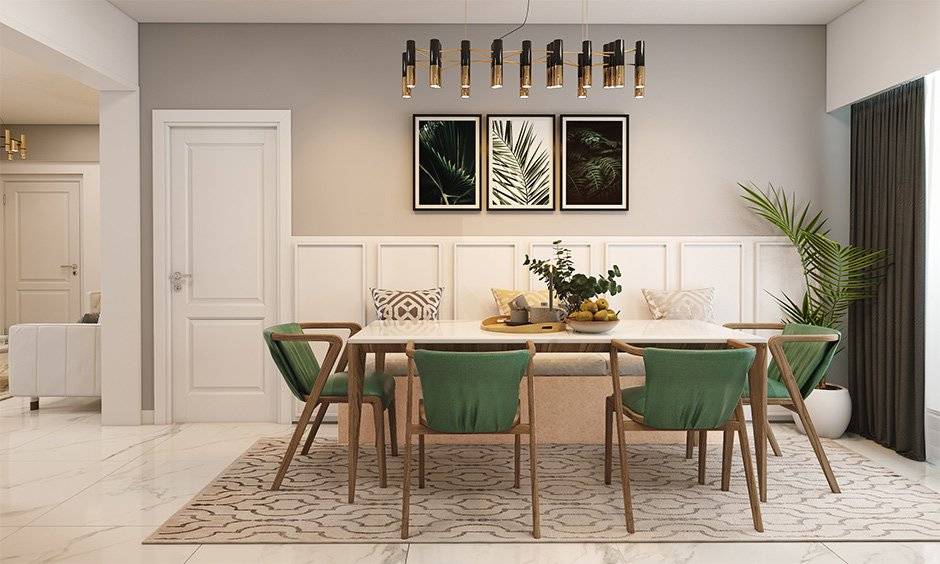Dining chairs play a crucial role in creating a comfortable and inviting dining space. More than just seating, they contribute to the room’s aesthetic appeal and enhance the overall dining experience. Choosing the right dining chairs involves considering factors like design, materials, comfort, and durability. In this guide, we explore everything you need to know about selecting the perfect dining chairs to suit your home or commercial setting.
Types of Dining Chairs
1. Upholstered Dining Chairs
- Features: These chairs come with padded seats and backrests, often covered in fabric or leather.
- Benefits: Provide maximum comfort for long meals.
- Popular Materials: Velvet, linen, faux leather, and genuine leather.
2. Wooden Dining Chairs
- Features: Made from solid wood like oak, mahogany, or walnut.
- Benefits: Durable, classic, and easy to maintain.
- Styles: Available in traditional, rustic, and modern designs.
3. Metal Dining Chairs
- Features: Crafted from stainless steel, aluminum, or iron.
- Benefits: Strong, lightweight, and often used in industrial or contemporary settings.
- Finishes: Powder-coated for weather resistance and longevity.
4. Plastic Dining Chairs
- Features: Molded from high-quality plastic or polycarbonate.
- Benefits: Affordable, lightweight, and easy to clean.
- Uses: Ideal for outdoor dining or casual indoor spaces.
5. Mixed Material Chairs
- Features: Combine materials like wood and metal or fabric and leather.
- Benefits: Offer a unique, versatile look.
- Popular Combinations: Wood with metal legs or upholstered seats on wooden frames.
Factors to Consider When Choosing Dining Chairs
1. Comfort
- Seat Height: Standard seat height is around 18 inches, ideal for most dining tables.
- Backrest: A well-designed backrest supports posture and adds to comfort.
- Padding: Upholstered seats provide more comfort for prolonged seating.
2. Material and Durability
- Wood: Known for strength and longevity. Choose hardwoods like oak or walnut for durability.
- Metal: Resistant to wear and tear, ideal for modern spaces.
- Fabric: Offers softness but requires more maintenance. Stain-resistant fabrics are a practical choice.
3. Style and Design
- Traditional: Features intricate carvings and rich wood finishes.
- Modern: Minimalist with clean lines, often using metal or plastic.
- Rustic: Uses natural wood, often with a distressed finish.
- Industrial: Combines metal and wood for a rugged, urban look.
4. Space and Size
- Dimensions: Ensure chairs fit comfortably around your dining table without overcrowding.
- Stackable Options: Great for small spaces or multipurpose rooms.
5. Maintenance
- Wooden Chairs: Wipe with a damp cloth; avoid harsh chemicals.
- Upholstered Chairs: Vacuum regularly and treat spills immediately.
- Metal Chairs: Clean with a soft cloth and mild detergent.
Top Trends in Dining Chairs
1. Sustainable Materials
- Manufacturers are focusing on eco-friendly materials like reclaimed wood and recycled plastic.
- Sustainable choices contribute to reducing environmental impact.
2. Mixed Textures
- Combining different materials and textures, such as wood with fabric or metal with leather, creates a dynamic look.
- Adds depth and character to the dining area.
3. Bold Colors
- Vibrant hues like deep blues, emerald greens, and mustard yellows are popular choices.
- Colorful chairs can serve as statement pieces in a neutral dining room.
4. Minimalist Designs
- Sleek, simple lines and understated elegance dominate contemporary dining spaces.
- Prioritizes functionality without compromising on style.
5. Vintage and Retro Styles
- Mid-century modern chairs with tapered legs and curved backs are making a comeback.
- Adds a timeless appeal to modern dining rooms.
How to Pair Dining Chairs with Your Table
1. Match Styles
- For a cohesive look, match the chair style to your table. For instance, a rustic table pairs well with wooden or upholstered chairs.
2. Mix and Match
- Combine different chair styles or colors for an eclectic, personalized touch.
- Ensure a common element, such as material or color, to maintain harmony.
3. Consider Proportions
- Ensure chairs are proportionate to the table’s size and height. Oversized chairs may overwhelm a small table.
4. Focus on Balance
- If the table is a bold statement piece, choose simpler chairs. Conversely, an understated table allows for more decorative chairs.
Popular Dining Chair Materials Explained
1. Hardwood
- Advantages: Durable, classic, and often handcrafted.
- Best For: Traditional and rustic settings.
2. Metal
- Advantages: Lightweight, durable, and easy to maintain.
- Best For: Modern, industrial, or outdoor spaces.
3. Fabric Upholstery
- Advantages: Offers comfort and a wide range of colors and patterns.
- Best For: Formal dining rooms or settings where comfort is key.
4. Leather and Faux Leather
- Advantages: Durable, easy to clean, and adds a luxurious touch.
- Best For: Contemporary and upscale interiors.
Final Thoughts on Dining Chairs
Selecting the right dining chairs is essential for creating a functional, stylish, and comfortable dining space. From understanding the materials to matching the design with your décor, investing time in choosing the right chairs enhances the overall ambiance of your dining area. Whether you prefer a classic wooden chair or a modern upholstered design, the perfect dining chair elevates every meal into a memorable experience.



